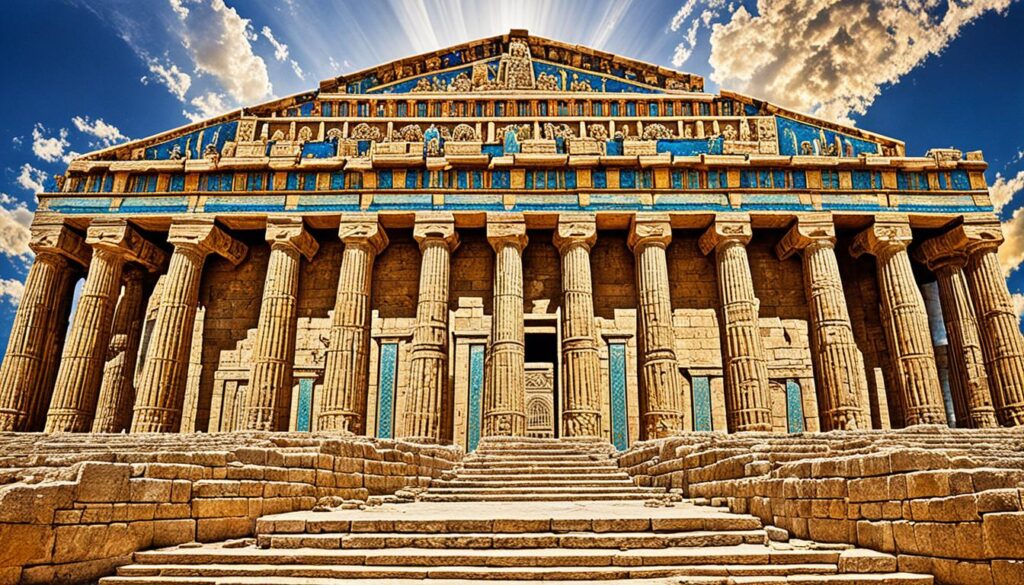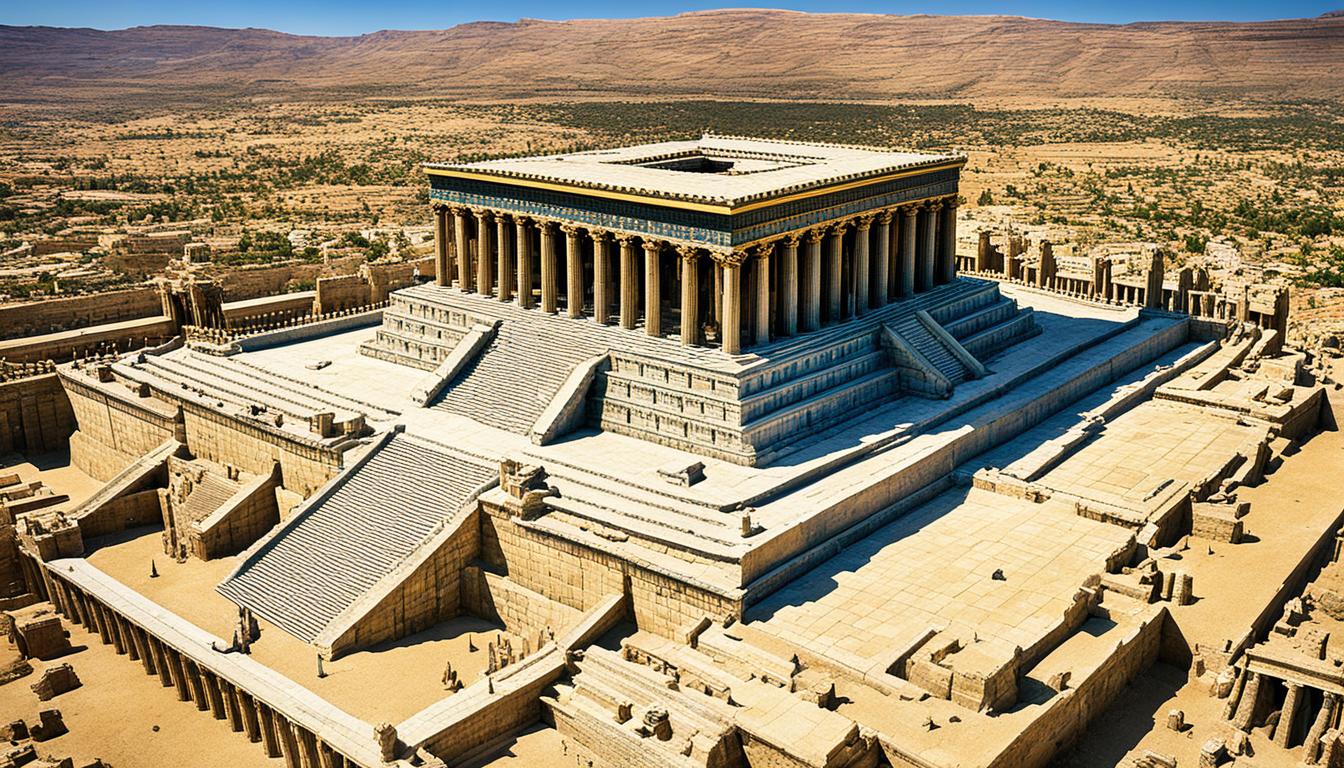Solomon’s Temple: A Place for God’s Presence
Have you ever wondered where God’s presence dwelled in ancient times? It was a sacred space, a place of worship that represented the interaction between God and humanity. But here’s the question: Was God’s presence confined to a physical building?
Solomon’s Temple, built by King Solomon, was considered the pinnacle of Israel’s history. It stood as a physical representation of the ideal order of the universe, adorned with gold, cedar, and sacred decorations, reflecting God’s desire for his creation. It was a place where heaven and earth met, and people could encounter the glory of God.
But did the temple merely serve as a reminder of God’s presence, or was it more than that? Join us as we explore the significance of Solomon’s Temple and its lasting impact in our understanding of God’s presence.
The Symbolism of Solomon’s Temple
Solomon’s temple, a magnificent structure adorned with gold, cedar, and sacred decorations, carried deep symbolism that extended beyond its physical form. It served as a model for how the universe was intended to be, reflecting the ideal order desired by God himself. Just like the garden of Eden, the temple represented a place where God and humanity could dwell together in harmony and unity.
The design and construction of the temple mirrored the Temple-universe, symbolizing the partnership between God and humanity in ruling over the earth. This Temple-universe imagery was evident in the placement of the temple, strategically positioned near Solomon’s palace, throne room, and judgment seat. It emphasized the interconnectedness and shared responsibility of God’s chosen people to govern their realm under his divine guidance.
The temple was not merely a physical structure but a mini-model of the universe, where every element carried profound meaning. Water, for example, symbolized not only physical cleansing but also spiritual salvation and the presence of God. The running water in the temple symbolized the life-giving flow of God’s grace and the abundant blessings bestowed upon his people.
Through its Edenic imagery, Solomon’s temple pointed to the ultimate fulfillment in Jesus, the Messiah, who became the new temple. Jesus brought the garden of Eden near to all who sought him, restoring the original plan of God to reconcile heaven and earth. Just as the temple was a physical representation of God’s interaction with humanity, Jesus became the living embodiment of God’s presence among us.
Let us look at the symbolism of Solomon’s temple as a reminder that our lives are meant to reflect the model for the Universe. We, as living temples, carry within us the presence of God. Like the temple in Solomon’s time, our lives should mirror the ideal order desired by God, bringing heaven’s influence into every aspect of our existence.

Embodying the Model
As living temples, we are called to represent God’s Kingdom and bring his presence wherever we go. Our lives should reflect the beauty, order, and divine purpose demonstrated in Solomon’s temple. By living in alignment with God’s will, we become living stones, shaping a new temple. Through our actions, we communicate the reality and presence of God’s Kingdom to a world in search of meaning and hope.
Just as the temple pointed to the remaking of the world, we, too, play a role in God’s redemptive plan. Let us embrace our identity as temples, seeking to fulfill the purpose for which we were created. May our lives serve as a testimony to the transformative power of God’s presence and the restoration of all things through Christ.
The Temple as a Reminder and our Role
The magnificent Solomon’s Temple, with its intricate design and grandeur, served as a powerful reminder that God’s presence was not confined to a physical building. It pointed to a greater truth; God desired to dwell in the hearts of those who loved and obeyed Him. In the Gospel, Jesus explained that His death would destroy the old ways of worship and establish a new kind of temple. He Himself became the ultimate temple, offering forgiveness, healing, and restoration to all who approached Him.
As believers, we are not only beneficiaries of this new temple but also participants in its purpose. We are temples of God’s presence, vessels of His glory. Created in His image, we have been designed to be living models of a universe set right by God’s love and grace. Through our faith in Jesus, we have entered into a partnership with God, ruling alongside Him and representing His Kingdom wherever we go. Our lives are called to radiate His love, compassion, and truth, communicating the reality and presence of God’s Kingdom.
Just as the temple in Solomon’s time pointed to the fulfillment in Jesus, our lives as temples point to the remaking of the world according to God’s good plan. We have the privilege and responsibility of reflecting His character and inviting others into a relationship with Him. Our daily choices, actions, and interactions should align with His commandments and demonstrate wholehearted devotion to the one genuine God. Let us, therefore, approach our role as temples with reverence, seeking forgiveness for our sins through regular prayer, and living in such a way that our lives become a powerful testimony to the transforming presence of God.
For a deeper exploration of Solomon’s Temple and the significance of God’s presence, refer to Inspired Scripture, Enduring Word, Bible Gateway, and Oak Pointe Church.







